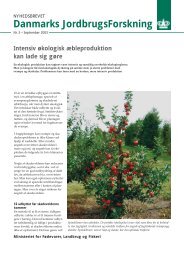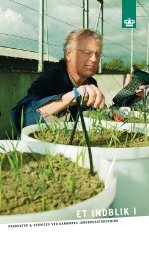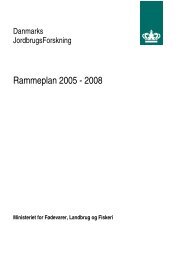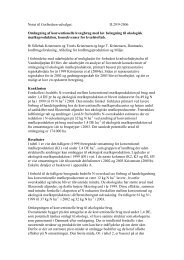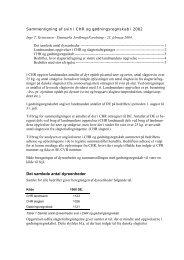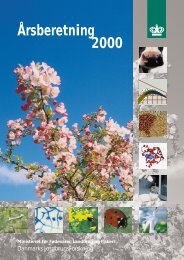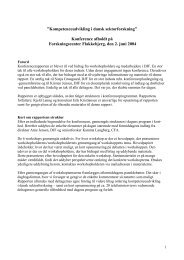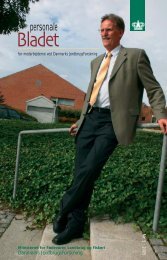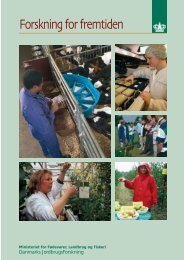Reproduction performances and conditions of group-housed non ...
Reproduction performances and conditions of group-housed non ...
Reproduction performances and conditions of group-housed non ...
Create successful ePaper yourself
Turn your PDF publications into a flip-book with our unique Google optimized e-Paper software.
- Paper IV -<br />
mixed model using the glmmPQL function in the MASS package (Venables & Ripley,<br />
2002) <strong>of</strong> R (R Development Core Team, 2004).<br />
3. Results<br />
For the reproduction parameters, the overall averages <strong>and</strong> the variation between sows<br />
across all 14 herds are presented in Table 1. In average, the sows involved in this study<br />
showed a very high litter size <strong>of</strong> nearly 15 born piglets per litter. The percent <strong>of</strong> re-mated<br />
sows varied from 0 to 45% <strong>and</strong> the number <strong>of</strong> born piglets per litter varied from 13.6 to<br />
15.7 between the herds.<br />
Table 1. Overall level <strong>and</strong> variation in different production parameters for all focal sows<br />
N Mean Std Min Max<br />
Interval from weaning to first mating, days 541 5.3 - 2 40<br />
Re-mated sows, % 541 11 - - -<br />
Culled in all, % <strong>of</strong> weaned 554 4.4 1) - - -<br />
Total number <strong>of</strong> born piglets/litter 2) 437 14.8 3.3 4.0 24.0<br />
Number <strong>of</strong> dead born/litter 437 1.5 - 0 12<br />
1) Any sows culled after re-mating are not included 2) Alive <strong>and</strong> dead born<br />
Parameter estimates <strong>and</strong> st<strong>and</strong>ard errors from the analysis <strong>of</strong> weaning to first mating interval,<br />
pregnancy chance <strong>and</strong> litter size are shown in Table 2. There were no effects <strong>of</strong> % not<br />
eating, aggressions after mixing, fear or lying behavior for any <strong>of</strong> the dependent variables.<br />
Weaning to first mating interval. The total number <strong>of</strong> skin lesions at mating tended to correlate<br />
positive with weaning to first mating interval (P=0.07) <strong>and</strong> a significant two-factor interaction<br />
between back fat at weaning <strong>and</strong> parity was found, in that the interval decreased<br />
with increased back fat at weaning but only for first parity sows (Figure 1). Further, a significant<br />
negative correlation with lactation length was found. No main effects or interactions<br />
with parity for aggressions, fear category or lying behaviour were found.<br />
93




